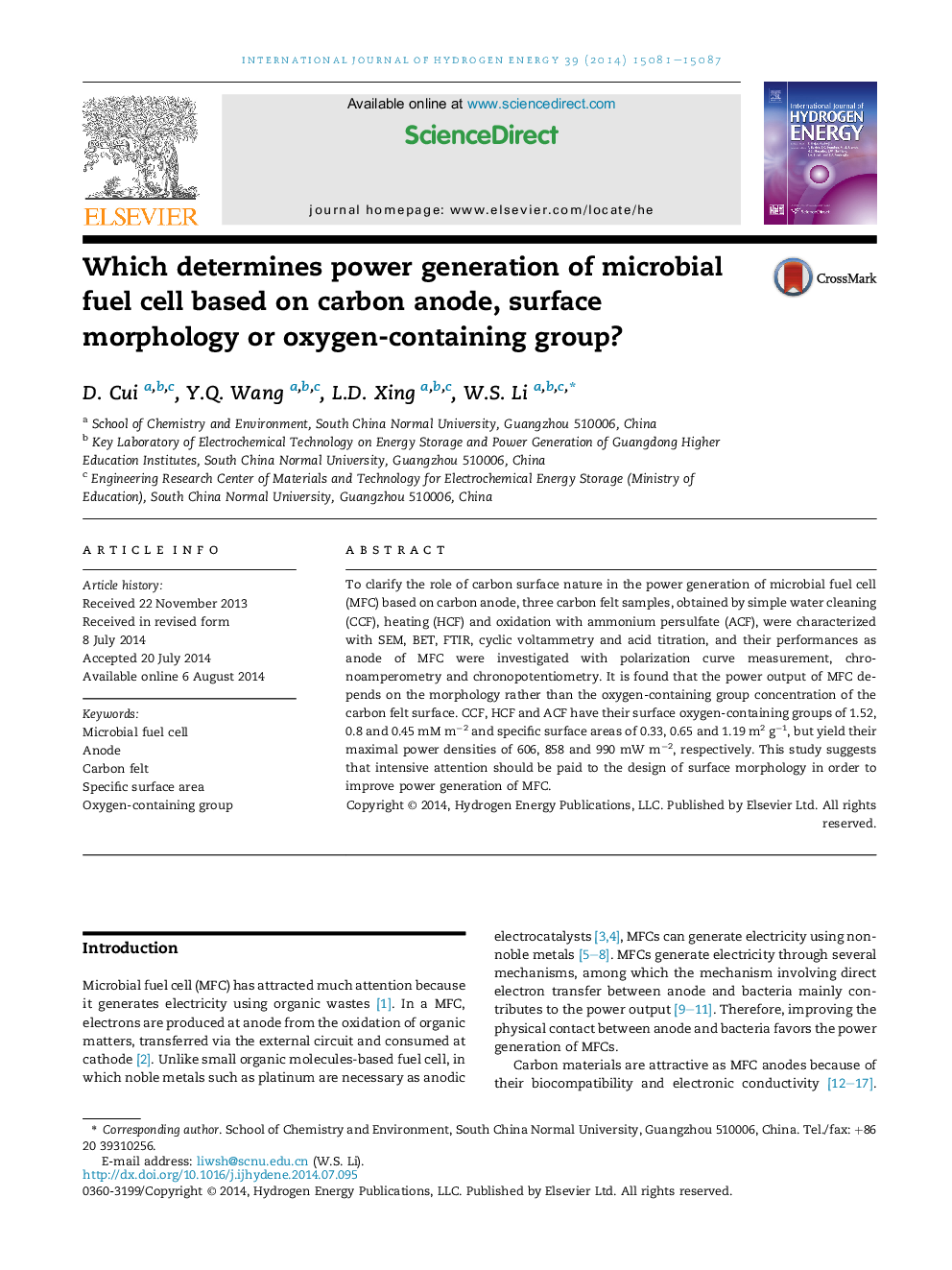| Article ID | Journal | Published Year | Pages | File Type |
|---|---|---|---|---|
| 7718395 | International Journal of Hydrogen Energy | 2014 | 7 Pages |
Abstract
To clarify the role of carbon surface nature in the power generation of microbial fuel cell (MFC) based on carbon anode, three carbon felt samples, obtained by simple water cleaning (CCF), heating (HCF) and oxidation with ammonium persulfate (ACF), were characterized with SEM, BET, FTIR, cyclic voltammetry and acid titration, and their performances as anode of MFC were investigated with polarization curve measurement, chronoamperometry and chronopotentiometry. It is found that the power output of MFC depends on the morphology rather than the oxygen-containing group concentration of the carbon felt surface. CCF, HCF and ACF have their surface oxygen-containing groups of 1.52, 0.8 and 0.45Â mMÂ mâ2 and specific surface areas of 0.33, 0.65 and 1.19Â m2Â gâ1, but yield their maximal power densities of 606, 858 and 990Â mWÂ mâ2, respectively. This study suggests that intensive attention should be paid to the design of surface morphology in order to improve power generation of MFC.
Related Topics
Physical Sciences and Engineering
Chemistry
Electrochemistry
Authors
D. Cui, Y.Q. Wang, L.D. Xing, W.S. Li,
